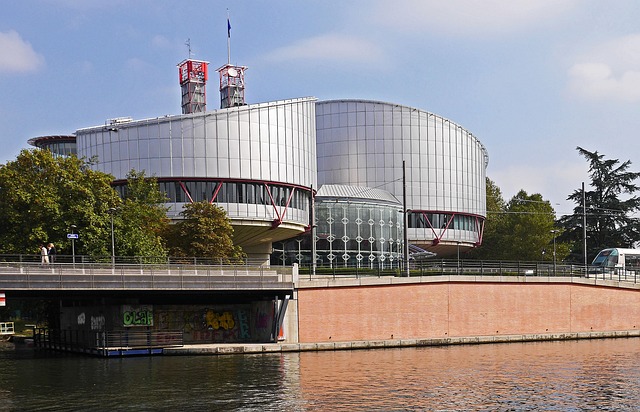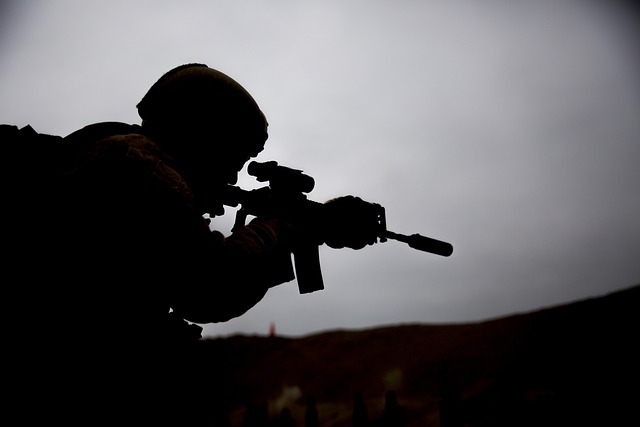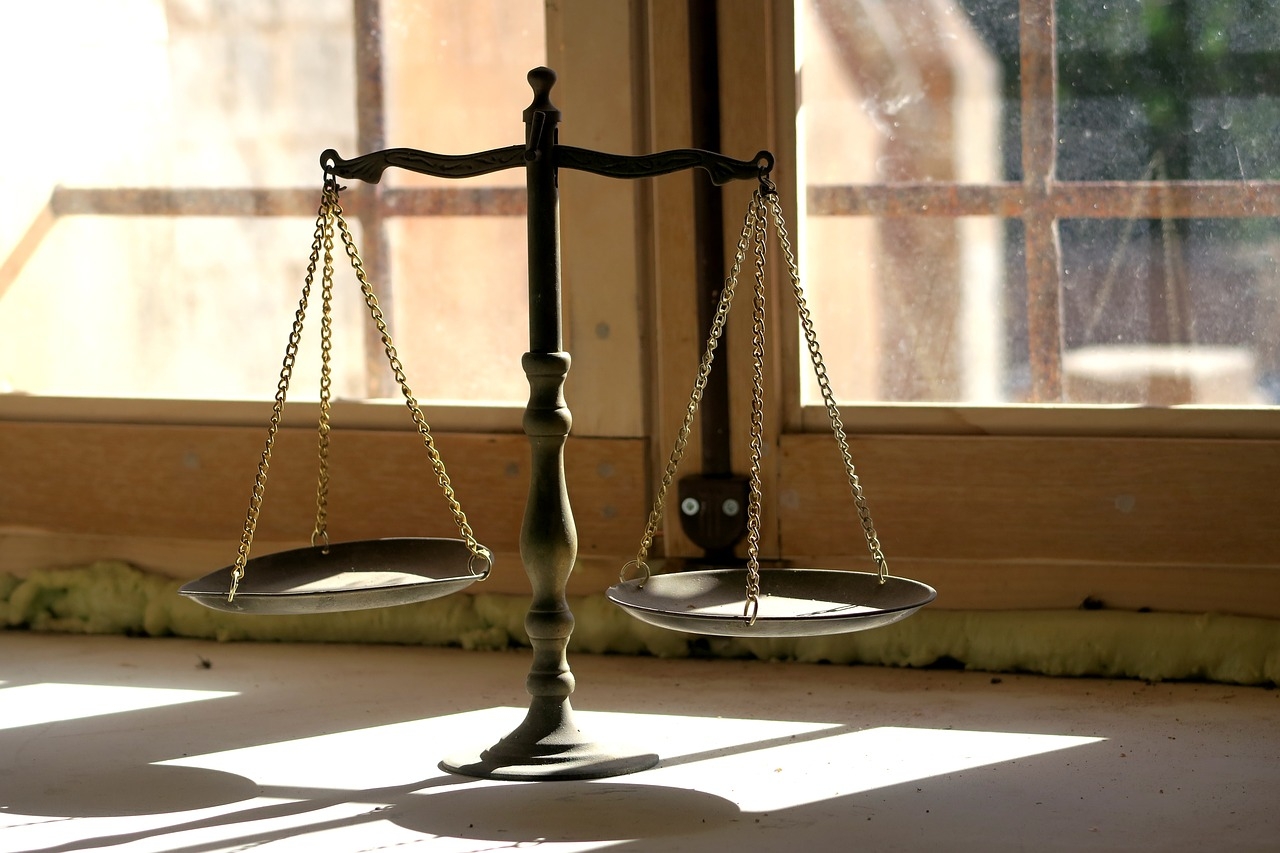6
0
10024
Фабула судового акта: Заявник, громадянин України М.М. Черніка (далі – Заявник) звернувся до ЄСПЛ зі скаргою на несправедливість кримінального провадження, оскільки Заявника було засуджено на підставі показань свідків, яких не було допитано в суді.
Щодо Заявника, який є колишнім слідчим, було порушено кримінальну справу за фактом викрадення опіуму, вилученого як доказ у кримінальній справі. Під час досудового розслідування три свідки дали показання, які стосувалися обставин збуту опіуму. На етапі досудового розслідування Заявник не мав доступу до матеріалів провадження.
Під час судового розгляду лише один із допитаних свідків з`явився в засідання та підтвердив надані раніше показання, два інші свідки в засідання не з`явилися, їх виклик та розшук Службою безпеки України не дав результатів. Суд визнав Заявника винним у викраденні та незаконному зберіганні наркотиків з метою збуту, його було засуджено до восьми років позбавлення волі з конфіскацією майна. Апеляційний суд скасував вказане рішення та направив справу на новий розгляд, оскільки суд першої інстанції врахував показання свідка, який не був допитаний в суді.
Під час повторного розгляду в суді першої інстанції свідки неодноразово викликалися в засідання, проте жоден з трьох – не з`явився і не дав показань. Служба безпеки України надала суду документацію про хворобу двох свідків, яка унеможливлювала їх явку в засідання, причини неявки третього свідка в засідання не були повідомлені суду. Новим рішенням Заявника так само було засуджено до восьми років позбавлення волі, суд визнав показання відсутніх свідків достовірними та узгодженими одне з одним, а також такими, що підтверджувались показаннями інших свідків. Апеляційний суд та Верховний Суд України залишили вказане рішення без змін.
ЄСПЛ відзначив, що в справі Заявника слід встановити: чи були вагомі підстави для прийняття показань відсутніх свідків як доказ; чи були показання відсутніх свідків єдиною чи вирішальною підставою для обвинувального вироку; чи були достатніми врівноважуючі фактори, які забезпечували справедливість судового розгляду в цілому.
ЄСПЛ наголосив, що принцип безпосередності судового розгляду є важливою гарантією в кримінальному судочинстві, у зв`язку з чим зміна складу суду першої інстанції після допиту важливого свідка, як правило, має привести до повторного допиту цього свідка. Разом з цим, принцип безпосередності судового розгляду не можна вважати забороною зміни складу суду; можуть бути вжиті заходи для забезпечення новим складом суду належного розуміння доказів і аргументів - наприклад, шляхом надання стенограм, або повторного допиту свідків.
На думку суддів ЄСПЛ, показання трьох свідків були «вирішальними» в тому сенсі, що вони, ймовірно, визначали результат справи Заявника, інші докази лише вказували на те, що Заявник мав можливість вчинити злочин. Проте, новий склад суду не допитав жодного із свідків, чиї показання мали вирішальне значення, не надав підтвердження того, що вживав заходів для розшуку свідків. ЄСПЛ підкреслив, що можливість у Заявника оскаржувати і спростовувати показання відсутніх свідків сама по собі не могла розглядатися як достатній врівноважує фактор для компенсації нестачі захисту; Заявник також не міг ознайомитися з матеріалами провадження, інші докази у справі не були достатніми для засудження Заявника. Новий склад суду визнав Заявника винним, не допитавши ключових свідків особисто, не маючи відеозаписів їхніх допитів.
Такзим чином, ЄСПЛ встановив порушення пунктів 1 і 3 (d) статті 6 Конвенції внаслідок порушення загальної справедливості провадження, оскільки засудження Заявника відбулося на підставі показань відсутніх свідків; причини неявки ключових свідків на повторному розгляді не були належним чином з`ясовані; забезпечення належного розуміння показань відсутніх свідків новим складу суду (наприклад, надання відеозаписів) не було забезпечено.
Аналізуйте судовий акт: «Боєць проти України» (Boyets v. Ukraine), заява № 20963/08
«Фамуляк проти України» (Famulyak v. Ukraine), заява № 30180/11
«П.К. проти Фінляндії» (P.K. v. Finland), заява № 37442/97
«Ібрагім та інші проти Сполученого Королівства» [ВП] (Ibrahim and Others v. the United Kingdom [GC]), заяви № 50541/08 та 3 інші
«Муртазальєва проти Росії» [ВП] (Murtazaliyeva v. Russia [GC]), заява № 36658/05

FIFTH SECTION
CASE OF CHERNIKA v. UKRAINE
(Application no. 53791/11)
JUDGMENT
Art 6 § 1 (criminal) and Art 6 § 3 (d) • Fair hearing • Conviction on retrial before new judge based decisively on testimony by absent witnesses, whom the applicant confronted before trial and one of whom was cross-examined at first trial • Absence of good reasons for non-attendance of one of the three key witnesses at retrial • Absence of particularly strong safeguards to ensure proper understanding of the absent witnesses’ evidence by the new judge • Overall fairness impaired
STRASBOURG
12 March 2020
This judgment will become final in the circumstances set out in Article 44 § 2 of the Convention. It may be subject to editorial revision.
In the case of Chernika v. Ukraine,
The European Court of Human Rights (Fifth Section), sitting as a Chamber composed of:
Síofra O’Leary, President,
Gabriele Kucsko-Stadlmayer,
Ganna Yudkivska,
André Potocki,
Mārtiņš Mits,
Lado Chanturia,
Anja Seibert-Fohr, judges,
and Claudia Westerdiek, Section Registrar,
Having deliberated in private on 11 February 2020,
Delivers the following judgment, which was adopted on that date:
PROCEDURE
1. The case originated in an application (no. 53791/11) against Ukraine lodged with the Court under Article 34 of the Convention for the Protection of Human Rights and Fundamental Freedoms (“the Convention”) by a Ukrainian national, Mr Mykhaylo Mykhaylovych Chernika (“the applicant”), on 17 August 2011.
2. The applicant was represented by Mr Oleh Leontyev, a lawyer practising in Lviv. The Ukrainian Government (“the Government”) were represented by their Agent, Mr Ivan Lishchyna.
3. The applicant alleged, in particular, relying on Article 6 §§ 1 and 3 (d) of the Convention, that the criminal proceedings against him had been unfair in that the domestic courts had admitted in evidence against him the statements of three witnesses, despite the fact that (i) the first of those witnesses had only been examined in the course of the original trial but not in the course of the subsequent retrial before a different trial judge and (ii) the second and third witnesses had never appeared before the trial court.
4. On 10 October 2017 the Government were given notice of the above complaint and the remainder of the application was declared inadmissible, pursuant to Rule 54 § 3 of the Rules of Court.
THE FACTS
5. The applicant was born in 1974 and lives in Lutsk.
6. The applicant is a former police investigator. According to the charges against him, on which he was eventually convicted, he stole opium – which had been seized as evidence in a case he had been investigating – by siphoning it off from the jar in which it was stored; he then diluted the remaining liquid. The applicant then allegedly transferred the stolen opium to his friend, Ms N.Sh., soliciting her help in selling the opium on the black market. With her help he transferred the opium to Mr V.G. and Mr I.S., who had come from the Crimea to Lutsk, charging them with the task of taking the opium back to the Crimea for subsequent sale there.
7. In the course of the pre-trial investigation those three witnesses made the following statements:
(i) N.Sh. stated that she and the applicant were friends. In the summer of 2005 he had asked for her help in selling opium seized in a criminal case that he had been investigating. She had agreed and had offered to sell the drugs through V.G. and I.S., whom she had recommended to the applicant as reliable. V.G. had refused the offer, but I.S. had agreed to take the drugs to the Crimea for subsequent sale. After V.G. and I.S. had left with the drugs she had been visited by people sent by the applicant who had demanded from her payment for the drugs. She had gone to the Crimea and had unsuccessfully tried to collect the debt;
(ii) V.G. stated that N.Sh. had offered him the opportunity to sell the applicant’s drugs in the Crimea or at least take them there for later sale. V.G. had refused but the applicant had nevertheless taken the jar containing the opium to N.Sh.’s flat. On the way back to the Crimea, V.G. had discovered that I.S. had the opium with him. He and I.S. had then thrown the drugs away. Later, a man claiming to be acting on the applicant’s behalf had visited V.G. in the Crimea, had threatened him and had demanded that he pay the applicant the price of the drugs from the proceeds gained from selling them on;
(iii) I.S. stated that he had come from the Crimea to Lutsk in 2005 with V.G. and had overheard the conversation in which the applicant and N.Sh. had offered to sell V.G. the drugs. Then they had discussed this with I.S. When time had come for V.G. and I.S. to go back to the Crimea and they were loading the car, N.Sh. brought out the bottle containing the opium and hid it in the trunk while I.S. looked on. On the way to the Crimea, V.G. had told I.S. that he had thought they were being followed, that he found the whole situation suspicious and that they risked long prison sentences. V.G., accordingly, had thrown the drugs away.
8. In the course of the pre-trial investigation confrontations were held between the above-mentioned witnesses and the applicant. The applicant submitted and the Government did not contest that at that stage the applicant and his lawyers did not have access to the investigation file (see the relevant provision of the domestic law in paragraph 33 below).
9. The applicant was tried before the Lutsk Court (Луцький міськрайонний суд), composed of Judge V.D., sitting in single-judge formation.
10. In the course of the trial N.Sh. affirmed her pre-trial statement.
11. Z. and Y.G., who knew the applicant and N.Sh. and either lived at or regularly visited N.Sh.’s flat and engaged in prostitution there, were questioned. They testified that V.G. and I.S. had visited N.Sh. from the Crimea and had bought some drugs from the applicant.
12. The trial court repeatedly summoned V.G. and I.S. but they failed to appear. It asked the Security Service of Ukraine (Служба безпеки України) to locate those witnesses and escort them to court. On 12 August 2008 the Security Service informed the court that it was unable to locate them. The court again asked the Security Service to bring those witnesses to the hearing on 18 August 2008. The witnesses failed to appear but the court was not informed of the reasons for V.G.’s absence. It proceeded to read out V.G.’s and I.S.’s pre-trial statements. There is no information in the case file regarding whether the applicant contested this reliance on the pre-trial statements.
13. On 26 August 2008 the Lutsk Court convicted the applicant of theft and illegal possession of a large quantity of drugs with intent to sell them and sentenced him to eight years’ imprisonment, with confiscation of his property.
14. Following an appeal by the applicant, on 10 March 2009 the Volyn Regional Court of Appeal quashed the trial court’s judgment on the grounds that the trial court had read out V.G.’s statement despite having no information as to the reasons for his latest failure to appear before the trial court (see paragraph 12 above). The case was remitted for retrial before a different trial judge.
15. The retrial was held before the Lutsk Court composed of a different judge, Judge V.B., sitting in a single-judge formation.
16. In the course of the retrial N.Sh., V.G. and I.S. were repeatedly summoned but failed to appear.
17. The failure of those witnesses to appear (for reasons that were unclear), despite their being repeatedly summoned, was discussed at the hearings of 30 June 2009 and 10 July 2009.
18. On the latter date the trial court ordered the Security Service to find the witnesses and asked the prosecutor’s office to ensure that the order was carried out.
19. On 9 September 2009 the Security Service provided the trial court with medical documentation showing that V.G. and I.S. were seriously ill: V.G. had been hospitalised and I.S. was suffering from tuberculosis and was infectious. According to the medical documentation, as summarised in the documents before the Court, the witnesses’ health did not allow them to travel from the Crimea to Lutsk (a distance of at least a thousand kilometres).
20. No information has been provided to the Court concerning the reasons for N.Sh.’s absence. She could not be found throughout the retrial.
21. On 23 September 2009 the court, at the opening of that day’s hearing, announced that N.Sh., V.G. and I.S., among other witnesses, had for unknown reasons not appeared, despite having being summoned.
22. On 28 September 2009 O.G., a police officer and a former colleague of the applicant, was examined as a witness. He testified that the applicant and N.Sh. had been friends. The prosecutor asked him, among other things, where N.Sh. worked. O.G. responded that N.Sh. was currently working as a prostitute and named the street in which she worked.
23. Two witnesses who had visited and worked at N.Sh.’s flat and who had testified at the first trial (see paragraph 11 above) also testified at the retrial, giving the following evidence.
(i) Y.G. testified, in particular, that she had come to know the applicant, who had been N.Sh.’s friend at the time, well and that all three of them had spent a lot of time together in N.Sh.’s flat. There the witness had overheard conversations between the applicant and N.Sh. and between N.Sh. and V.G. and I.S. concerning drugs;
(ii) Z. stated, in particular, that she had lived at N.Sh.’s flat, which the applicant had visited regularly. Z. had once overheard the applicant tell N.Sh. that he was in a position to sell some drugs seized in a criminal case he was investigating. N.Sh. had responded that she had friends in the Crimea who would be able to sell the drugs on. V.G. and I.S. had been mentioned in that context. They had come from the Crimea and had visited N.Sh.’s flat several times.
24. O.O., who had also been living in N.Sh.’s flat at the relevant time, testified that the applicant had been friends with N.Sh. and had visited her flat and that V.G. and I.S. had also visited her flat at about the same time.
25. On 11 December 2009 the Lutsk Court convicted the applicant again and sentenced him to eight years’ imprisonment. The court cited essentially the same evidence as had been cited in the first trial judgment:
(i) N.Sh.’s, V.G.’s and I.S.’s statements. The court stated that N.Sh.’s, V.G.’s and I.S.’s pre-trial statements had been fully confirmed in the course of their pre-trial confrontations with the applicant (see paragraphs 7 and 8 above), who had been able to examine them and put any questions to them – an opportunity he had fully used. Accordingly, the court did not consider that the applicant’s defence rights or the “principle of immediacy” in respect of the examination of evidence (принцип безпосередності дослідження доказів) had been breached. The court considered the evidence of the absent witnesses to be reliable as their statements accorded with each other. It also stated that those statements had been corroborated by the statements of N.Sh.’s friends and colleagues (Y.G., Z. and O.O. – see paragraphs 23 and 24 above);
It is not clear from the court’s judgment whether, in citing N.Sh.’s evidence, it relied on her pre-trial statements or also on her evidence given in the course of the first trial. By law (see paragraph 31 above) this witness’s evidence given in the course of the first trial had to be recorded in the trial transcript, kept in the case file and available to the new trial judge. The applicant did not argue and nothing in the file indicates that domestic law was not followed in that respect;
(ii) the statements of N.Sh.’s friends and colleagues (Y.G., Z., O.O. – see paragraphs 23 and 24 above);
(iii) the statement of officer O.G. to the effect that the applicant and N.Sh. had been friends (see paragraph 22 above);
(iv) documentary evidence that the applicant had had possession of the jar containing opium that had been seized as evidence, and expert evidence showing that between December 2004 (when the applicant had taken custody of the jar) and May 2006 (when its contents had been re-examined by an expert) the amount of active drugs in the jar had fallen by 1.2 kilogram;
(v) the testimony of several police officers and forensic experts to the effect that the applicant had had possession of the jar containing drugs and that there had been no evidence of the jar having been tampered with after the applicant had handed it over to other officers. The court had examined that evidence in order to address the defence argument that the jar may have been tampered with after the applicant had handed it over to another investigator who had taken over the case, as the jar had not been sealed throughout the relevant time.
26. The applicant appealed, submitting in particular that N.Sh., V.G. and I.S. had not been examined in the course of the retrial, that they had not been credible as witnesses and that their statements had been contradictory. He pointed out, in particular, that the witnesses had not been prosecuted for drug dealing even though, according to their statements, they had bought drugs from him. The details of their accounts had changed over time, rendering them not credible.
27. On 2 March 2010 the Volyn Regional Court of Appeal upheld the trial court’s judgment. The court considered the statements of the three witnesses to be concordant with each other and with the results of the confrontations with the applicant. The trial court had taken all possible steps to find the above-mentioned witnesses and examine them.
28. On 15 March 2011 the Supreme Court rejected an appeal on points of law lodged by the applicant and upheld the lower courts’ decisions.
29. The provisions of the 1963 Code of Criminal Procedure (“the CPC”), which at the material time governed the summoning of witnesses, can be found in Karpyuk and Others v. Ukraine (nos. 30582/04 and 32152/04, §§ 77 to 80, 6 October 2015).
30. Article 85‑2 of the CPC provided that investigative steps, including confrontations, could be video recorded and set forth the procedure in respect of such recordings.
31. Article 87 of the CPC required that a transcript of a trial be kept in the case file and that that transcript contain, in particular, a detailed record of all witness testimony given in the course of the trial.
32. Article 374 of the CPC provided that, if a judgment was quashed on appeal and remitted for retrial on account of an error committed by the trial court, the case was to be tried by a different judge. That judge had full powers, identical to those of the trial judge, to conduct a retrial according to the rules governing trials, including reexamination of all the evidence, summoning and examination of witnesses (see the relevant provisions of the CPC to which reference is made in paragraph 29 above).
Article 375 of the CPC provided that retrials, including examination of the evidence, were governed by the same rules as those applicable to trials. Among those rules applicable equally to both trials and retrials was Article 299 of the CPC which provided that it was the trial judge who determined the scope of evidence which was to be examined in the course of the trial (and, accordingly, retrial). There was, however, no provision in domestic law explicitly requiring the retrial judge to reexamine all the evidence examined by the trial judge.
33. Article 218 of the Code required that the defendant be given access to the full case file upon the completion of the pre-trial investigation, prior to the case’s transfer (upon the lodging of a bill of indictment) to the trial court. The text of that provision is set out in Nevmerzhitsky v. Ukraine (no. 54825/00, § 54, ECHR 2005‑II (extracts)).
34. The 2012 Code of Criminal Procedure, which is in force at present, entitles a convicted person to request the reopening of criminal proceedings that ended in a final conviction where the Court has found that a violation of the Convention occurred in the course of those proceedings. The relevant provisions of domestic law are set out in Rostovtsev v. Ukraine (no. 2728/16, §§ 16, 19-22, 25 July 2017).
THE LAW
35. The applicant complained that the proceedings against him had been unfair in that the domestic courts had admitted in evidence against him the statements of three witnesses, despite the fact that (i) the first of those witnesses (N.Sh.) had only been examined in the course of the original trial but not in the course of the subsequent retrial before a different trial judge and (ii) the second and third witnesses (V.G. and I.S.) had never appeared before the trial court. He relied on Article 6 §§ 1 and 3 (d) of the Convention, which read:
“1. In the determination of ... any criminal charge against him, everyone is entitled to a fair ... hearing ... by [a] ... tribunal ...
...
3. Everyone charged with a criminal offence has the following minimum rights:
...
(d) to examine or have examined witnesses against him and to obtain the attendance and examination of witnesses on his behalf under the same conditions as witnesses against him;
...”
36. The Court notes that the application is not manifestly ill-founded within the meaning of Article 35 § 3 (a) of the Convention. It furthermore notes that it is not inadmissible on any other grounds. It must therefore be declared admissible.
37. The applicant pointed out that, other than N.Sh., V.G. and I.S., the other witnesses had been either police officers (whose evidence had therefore not been impartial) or witnesses who had testified merely that the applicant had known N.Sh. but had said nothing about the actual circumstances of the alleged crime. The pre-trial confrontations had not been equivalent to cross-examining the witnesses at the trial because when those confrontations had been conducted the applicant had not had access to the investigation file. It had only been after the opening of access to the case-file material at the end of the investigation (see paragraph 33 above) that the applicant had been in a position to fully take advantage of his defence rights. The domestic authorities had been in a position to ensure the appearance of N.Sh., V.G. and I.S. but had failed to do so.
38. The Government submitted that the applicant’s conviction had been based on a wide range of evidence, including the evidence of numerous witnesses other than N.Sh., V.G. and I.S. Moreover, the applicant had been able to confront those three witnesses in the course of the pre-trial investigation.
(a) Relevant case-law
39. The Court, in its case-law, has developed two main sets of potentially relevant principles:
(i) case-law concerning the admission of evidence of witnesses absent from a trial and
(ii) case-law concerning the principle of immediacy.
(i) Admission of evidence of witnesses absent from a trial
40. The Court has formulated the general principles to be applied in cases where a prosecution witness did not attend a trial but statements previously made by him or her were admitted in evidence; those general principles have been set out in the cases of Al‑Khawaja and Tahery v. the United Kingdom ([GC], nos. 26766/05 and 22228/06, §§ 119-147, ECHR 2011), and Schatschaschwili v. Germany ([GC], no. 9154/10, §§ 110-131, ECHR 2015). A restatement of those principles can be found in, for example, Seton v. the United Kingdom (no. 55287/10, §§ 57-59, 31 March 2016), and Boyets v. Ukraine (no. 20963/08, §§ 74-76, 30 January 2018).
41. To summarise, the application of the Al-Khawaja and Schatschaschwili principles involves, generally speaking, the examination of three questions:
(i) whether there was a good reason for the non-attendance of the witness and for the admission of the absent witness’s statement as evidence (see Schatschaschwili, cited above, §§ 119-125);
(ii) whether the evidence of the absent witness was the sole or decisive basis for the conviction or carried such significant weight that its admission may have handicapped the defence (ibid., §§ 116, 119 and 126-147); and
(iii) whether there were sufficient counterbalancing factors, including strong procedural safeguards, to compensate for the handicaps faced by the defence as a result of the admission of the untested evidence and to ensure that the trial, judged as a whole, was fair (ibid., § 147).
42. Such counterbalancing factors must permit a fair and proper assessment of the reliability of that evidence (ibid., § 125). The ability to confront a witness for the prosecution at the investigation stage but who is subsequently absent at the trial is an important safeguard (ibid., § 130). In a number of cases where the applicants had confronted the witnesses against them at the pre-trial stage the Court found no violation of Article 6 §§ 1 and 3 (d) of the Convention (see Chmura v. Poland, no. 18475/05, §§ 56 and 57, 3 April 2012; Aigner v. Austria, no. 28328/03, §§ 41-46, 10 May 2012; Gani v. Spain, no. 61800/08, §§ 48-50, 19 February 2013; and Palchik v. Ukraine, no. 16980/06, §§ 50-52, 2 March 2017).
43. In three out of those four cases, however, the Court found that there was a good reason to admit the evidence of witnesses owing to their disappearance or inability to testify (see the above-cited cases of Chmura, § 50, Aigner, § 39, and Gani, § 45). Only in Palchik did the Court find no violation of Article 6 §§ 1 and 3 (d), even though no good reason was given for the witnesses’ non-appearance at the trial. However, in Palchik, unlike in the present case, the applicant did not submit that his defence had been put at a disadvantage in the course of the pre-trial confrontations (see Palchik, cited above, §§ 40-42 and 50).
44. Moreover, in Chmura an additional safeguard (which together with other factors led to a finding of no violation) was provided by the fact that a video recording of the absent witness’s pre-trial statement was made available to the trial court (cited above, §§ 19 and 50).
45. The Court has held that pre-trial confrontations conducted before an investigator who did not meet the requirements of independence and impartiality, who had the largely discretionary power to block questions and in which the applicants were unrepresented are not a substitute for the examination of witnesses in open court (see Melnikov v. Russia, no. 23610/03, §§ 78-81, 14 January 2010; Karpenko v. Russia, no. 5605/04, §§ 67-69, 13 March 2012; Vanfuli v. Russia, no. 24885/05, § 115, 3 November 2011; and see also Nechto v. Russia, no. 24893/05, § 123, 24 January 2012, where those concerns were combined with doubts as to the voluntary nature of the applicants’ participation in confrontations).
46. While developed for scenarios in which a prosecution witness does not appear at the trial, the Al‑Khawaja and Schatschaschwili principles can also be applicable where the witnesses do appear before the trial court but procedural irregularities prevent the applicant from examining them (see Ürek and Ürek v. Turkey, no. 74845/12, § 49, 30 July 2019). They can also serve as guidance where the relevant issue is not the non-appearance of witnesses at the trial but rather the modalities of their cross-examination which may limit the rights of the defence (see Cherpion v. Belgium (dec.). no. 47158/11, §§ 35-41, 9 May 2017).
(ii) The principle of immediacy
47. The Court has held that an important element of fair criminal proceedings is the possibility for the accused to be confronted with a witness in the presence of the judge who will ultimately decide the case. This principle of immediacy is an important guarantee in criminal proceedings in which the observations made by the court about the demeanour and credibility of a witness may have important consequences for the accused. Therefore, a change in the composition of the trial court after the hearing of an important witness should normally lead to the rehearing of that witness (see P.K. v. Finland (dec.), no. 37442/97, 9 July 2002).
48. However, the principle of immediacy cannot be deemed to constitute a prohibition of any change in the composition of a court during the course of a case. Very clear administrative or procedural factors may arise, rendering a judge’s continued participation in a case impossible. The Court has indicated that measures can be taken to ensure that the judges who continue hearing the case have the appropriate understanding of the evidence and arguments – for example, by making transcripts available where the credibility of the witness concerned is not at issue, or by arranging for a rehearing of the relevant arguments or of important witnesses before the newly composed court (see Cutean v. Romania, no. 53150/12, § 61, 21 April 2009).
49. Applying the principle of immediacy, the Court has generally found violations of Article 6 where the composition of the court changed completely and the new composition did not personally examine certain witnesses for the prosecution (see Cerovšek and Božičnik v. Slovenia, nos. 68939/12 and 68949/12, §§ 44-48, 7 March 2017; Cutean, cited above, §§ 70-73; and Svanidze v. Georgia, no. 37809/08, §§ 35-38, 25 July 2019; also contrast P.K., cited above; Graviano v. Italy, no. 10075/02, §§ 39-40, 10 February 2005; and Škaro v. Croatia, no. 6962/13, §§ 22-31, 6 December 2016, where only part of the judicial formation changed and the Court found no violation of Article 6 on account of a failure to re-examine witnesses before the changed formation).
50. In Famulyak v. Ukraine ((dec.), no. 30180/11, §§ 40-47, 26 March 2019) the Court declared the relevant complaint manifestly ill-founded, even though the composition of the court had changed completely. In Famulyak the applicant’s conviction was quashed on appeal for technical reasons, essentially without the finding of guilt being questioned. The applicant then stood trial before a new trial judge. The victim appeared at the retrial and testified before the new trial judge, but the applicant, owing to a particular combination of circumstances, did not cross-examine that witness in the presence of that judge. Given the circumstances, the Court found that the fact that the new trial judge had access to the transcripts of the witnesses’ examination at the original trial was sufficient to ensure that she had an adequate understanding of the evidence in that case.
As to the other witnesses, their evidence did not play a significant role in the applicant’s conviction. The matters on which they testified were not ones which the appellate court instructed the trial court to clarify in the course of the retrial. In such circumstances, the fact that the new trial judge had the transcripts of their examination at her disposal was sufficient to ensure that she had an adequate understanding of their evidence.
(iii) Centrality of the overall fairness of proceedings
51. The Court has consistently reiterated that its primary concern under Article 6 is to evaluate the overall fairness of criminal proceedings (see Schatschaschwili, cited above, § 101). That is the ultimate goal of various tests developed to examine various matters related to specific rights guaranteed by Article 6 § 3 (see, for example, Schatschaschwili, cited above, §§ 116 and 118; Correia de Matos v. Portugal [GC], no. 56402/12, § 126, 4 April 2018; Beuze v. Belgium [GC], no. 71409/10, §§ 147-149, 9 November 2018; and Murtazaliyeva v. Russia [GC], no. 36658/05, §§ 167 and 168, 18 December 2018).
52. Those minimum rights are not aims in themselves: their intrinsic aim is always to contribute to ensuring the fairness of the criminal proceedings as a whole (see Correia de Matos, cited above, §§ 119‑120). Compliance with the requirements of a fair trial must be examined in each case having regard to the development of the proceedings as a whole and not on the basis of an isolated consideration of one particular aspect or one particular incident (see Ibrahim and Others v. the United Kingdom [GC], nos. 50541/08 and 3 others, § 251, 13 September 2016).
(b) Application of the above principles to the present case
54. The first relevant question under both the principle of immediacy and the case-law on absent witnesses is what role the evidence of those absent witnesses played in the applicant’s conviction – namely whether it was “sole”, “decisive” or “carried such significant weight that its admission may have handicapped the defence”, as those terms are defined in Schatschaschwili (cited above, §§ 116, 119, 123 and 124). The second relevant question is whether the composition of the court that convicted the applicant changed entirely or only in part.
55. The Court will then examine whether there was a good reason for the witnesses’ absence at the retrial which led to the applicant’s conviction and whether, if the absent witness evidence carried the significant weight referred to above, appropriate safeguards were in place to ensure that, despite that absence, that court formation nevertheless had an adequate understanding of the absent witnesses’ evidence such that the fairness of proceedings was preserved.
56. Before applying the relevant principles in the circumstances of the present case, the Court considers it important to recall that placing the overall fairness of the proceedings at the heart of the assessment is inherent in the case-law on defence rights enshrined in Article 6 §§ 1 and 3 of the Convention. The emphasis on overall fairness is moreover consistent with the role of the Court, which is not to adjudicate in the abstract or to harmonise the various legal systems - which at pre-trial and trial level may vary considerably - but to establish safeguards to ensure that the proceedings followed in each case comply with the requirements of a fair trial, having regard to the specific circumstances of each accused (see Beuze, cited above, §§ 147-148).
57. Turning to the first of the questions mentioned in paragraph 54 above, the Court notes that the evidence of the three witnesses in question was central to the prosecution’s case since they were the only other direct participants in the unlawful activity with which the applicant was charged. While other witnesses overheard discussions between the applicant and the three absent witnesses about a possible drugs transaction, they did not know its details and their evidence in this respect was rather general. All other evidence against the applicant simply showed that the applicant had had an opportunity to commit the crime because he had had access to the drugs and had been in contact with the three absent witnesses (see paragraph 25 (ii)‑(v) above).
58. The Court considers, therefore, that the evidence of the witnesses was “decisive” in the sense that it was likely determinative of the outcome of the applicant’s case (see Seton, cited above, § 58 (vi)).
59. As stated in paragraph 15 above, the composition of the trial court changed entirely and the new composition did not examine any of the three witnesses.
61. The reason for N.Sh’s. absence was, apparently, the authorities’ failure to locate her. The appearance of V.G. and I.S. was prevented by their poor state of health (see paragraphs 12 and 16 above).
62. Given the fragmentary nature of the information provided, the Court finds that the Government have not shown that the authorities displayed appropriate diligence in their efforts to ensure the witness’ presence, particularly N.Sh., and in putting in place appropriate safeguards to ensure the overall fairness of the proceedings, despite the absence of the three witnesses.
63. As far as N.Sh. is concerned, it appears that the authorities have been unable to locate her. However, even though in the course of the retrial a witness indicated that he knew where she worked, there is no indication that the authorities followed up on that information or attempted to find her (see paragraph 22 above). Accordingly, the Government have failed to show that there was a good reason for her absence from the retrial.
64. As far as V.G. and I.S. are concerned, there is no reason to doubt that their state of health indeed prevented them from travelling the considerable distance to Lutsk, where the retrial was held (see paragraph 19 above). The Court notes, however, that no reason was given for their absence at the original trial (see paragraphs 12 and 14 above).
65. Furthermore, the Court finds that the Government have been unable to show, despite the centrality of the evidence provided by the absent witnesses, that adequate safeguards were in place to preserve the fairness of proceedings.
66. In this context the Court reiterates that the extent of the counterbalancing factors necessary in order for a trial to be considered fair depends on the weight of the evidence of the absent witness. The more important that evidence, the more weight the counterbalancing factors would have to carry in order for the proceedings as a whole to be considered fair (see Schatschaschwili, cited above, § 116). Given the centrality of the absent witnesses’ evidence, particularly that of N.Sh., in the present case, weighty counterbalancing factors were required to ensure the fairness of proceedings.
67. The Court perceives three potential alternative counterbalancing factors in the proceedings (see Schatschaschwili, §§ 126-130, cited above, for a discussion of possible counterbalancing factors):
(i) the opportunity, which the applicant enjoyed in the course of the domestic proceedings, to give his own version of the events in question and to cast doubt on the credibility of the absent witnesses and point out any incoherence in their statements;
(ii) the availability of further corroborative evidence;
(iii) the fact that the applicant participated in confrontations with all three witnesses in the course of the pre-trial investigation and was able to cross-examine N.Sh. in the course of the original trial.
68. As to the first factor, the Court notes that the applicant did have the opportunity, in the course of the domestic proceedings, to give his own version of events and to cast doubt on the credibility of the absent witnesses. However, the Court has repeatedly held that such an opportunity to challenge and rebut the absent witnesses’ statements cannot, of itself, be regarded as a sufficient counterbalancing factor to compensate for the handicap for the defence created by their absence (see Trampevski v. the former Yugoslav Republic of Macedonia, no. 4570/07, § 49, 10 July 2012, and Riahi v. Belgium, no. 65400/10, § 41, 14 June 2016). This is also the case here.
69. As to the second factor, as the Court has found in paragraph 57 above, while corroborative evidence was available, it would have been of limited probative value in the absence of the evidence of the three witnesses in question.
70. As to the third potential counterbalancing factor (the opportunity to confront the witnesses at the pre-trial stage), the applicant submitted that that opportunity could not have provided an adequate safeguard since, at the pre-trial stage (when the confrontations had been conducted), the defence had not had access to the evidence in the domestic case file (see paragraphs 8, 33 and 37 above). In this respect the applicant’s case should be distinguished from Famulyak and Palchik (both cited above), where the Court has not been confronted with this issue.
71. The applicant’s limited knowledge of the case file at the pre-trial stage is a relevant consideration in assessing the fairness of the procedure (compare Chmura, cited above, §§ 53-56) but cannot, in itself, be decisive since, where a confrontation occurs before the completion of the pre-trial investigation, in many cases the evidence-gathering process is likely to be, by the very nature of things, incomplete.
72. In the present case, the handicap that the limited knowledge of the case file at the time of the confrontations imposed on the defence was not so severe as to render, on its own, the confrontations entirely inadequate as a procedural safeguard (contrast the cases cited in paragraph 45 above).
73. This, however, is not the end of the matter, since the trial judge who eventually convicted the applicant had no opportunity personally to examine any of the three key witnesses for the prosecution. Neither did he have at his disposal a video recording of their statements even though domestic law envisaged a possibility of such video recording (see paragraph 30 above) and the latter may have provided an important additional safeguard (see Schatschaschwili, cited above, § 127). Therefore, the above‑mentioned handicap that the applicant suffered at the pre-trial stage was combined with his inability to confront the witnesses in the presence of the judge who was trying his case.
74. As indicated previously, and the Court finds this of considerable importance, the Government failed to show that there was a good reason for the absence of the witness N.Sh. at the retrial (see paragraph 63 above). The possible whereabouts of this witness were indicated to the retrial court but do not appear to have been followed up (see paragraph 22 above). As far as the other two witnesses are concerned, while there was a good reason for their absence from the retrial, their evidence was closely linked to that of N.Sh. Therefore, the Government needed to show that particularly strong safeguards were in place to ensure the proper understanding of these three witnesses’ evidence by the new trial judge and the fairness of the proceedings (see paragraph 66 above).
75. However, the Government have failed to show that any such safeguards were in place other than the fact that the transcripts of those witnesses’ questioning in the course of the pre-trial investigation and (for N.Sh.) trial were available to the new trial judge. The Court considers that the Government have failed to demonstrate that that sole safeguard was sufficient under the circumstances.
76. For the Court, the above-mentioned combination of circumstances was capable of prejudicing the overall fairness of the criminal proceedings against the applicant.
77. In that respect the applicant’s case has to be distinguished from the case of Famulyak (cited above), which was characterised by the particular circumstances set out in paragraph 50 above that are absent in the present case and where, most notably, the retrial judge did have an opportunity to examine the witness whose evidence was decisive for Mr Famulyak’s conviction even though the latter had not had an opportunity to cross-examine the witness in that judge’s presence.
78. There has, accordingly, been a violation of Article 6 §§ 1 and 3 (d) of the Convention.
79. Article 41 of the Convention provides:
“If the Court finds that there has been a violation of the Convention or the Protocols thereto, and if the internal law of the High Contracting Party concerned allows only partial reparation to be made, the Court shall, if necessary, afford just satisfaction to the injured party.”
80. The applicant claimed 60,000 euros (EUR) in respect of non‑pecuniary damage.
81. The Government contested that claim, considering it unjustified and excessive.
82. The Court notes that in the present case it has found a violation of Article 6 §§ 1 and 3 (d) of the Convention. It does not follow from that finding that the applicant was wrongly convicted, and it is impossible to speculate as to what might have occurred had there been no breach of the Convention. The Court observes that domestic law provides for the right to request a reopening of domestic proceedings (see paragraph 34 above and Rostovtsev v. Ukraine, no. 2728/16, §§ 16, 19-22, 40-42, 25 July 2017).
83. The Court considers, in the circumstances of the present case, that the finding of a violation constitutes in itself sufficient just satisfaction for any non‑pecuniary damage sustained by the applicant.
84. The applicant claimed EUR 3,000 for the costs and expenses incurred before the domestic courts and EUR 2,000 for those incurred before the Court, as well as EUR 200 in postal expenses incurred in the domestic proceedings and proceedings before the Court, to be paid into the account of his lawyer.
85. The Government contested those claims, considering them unfounded and, in any case, excessive.
86. According to the Court’s case-law, an applicant is entitled to the reimbursement of costs and expenses only in so far as it has been shown that these have been actually and necessarily incurred and are reasonable as to quantum. In the present case, regard being had to the documents in its possession and the above criteria, the Court considers it reasonable to award the sum of EUR 1,500, for the proceedings before the Court, to be transferred directly into the account of the applicant’s lawyer Mr Leontyev.
87. The Court considers it appropriate that the default interest rate should be based on the marginal lending rate of the European Central Bank, to which should be added three percentage points.
FOR THESE REASONS, THE COURT, UNANIMOUSLY,
(a) that the respondent State is to pay the applicant, within three months from the date on which the judgment becomes final, in accordance with Article 44 § 2 of the Convention, EUR 1,500 (one thousand five hundred euros), plus any tax that may be chargeable to the applicant, in respect of costs and expenses, to be converted into the currency of the respondent State at the rate applicable at the date of settlement and to be transferred directly into the account of the applicant’s lawyer Mr Leontyev;
(b) that from the expiry of the above-mentioned three months until settlement simple interest shall be payable on the above amount at a rate equal to the marginal lending rate of the European Central Bank during the default period, plus three percentage points;
Done in English, and notified in writing on 12 March 2020, pursuant to Rule 77 §§ 2 and 3 of the Rules of Court.
Claudia Westerdiek Síofra O’Leary
Registrar President
Переглядів
Коментарі
Переглядів
Коментарі
Отримайте швидку відповідь на юридичне питання у нашому месенджері, яка допоможе Вам зорієнтуватися у подальших діях
Ви бачите свого юриста та консультуєтесь з ним через екран , щоб отримати послугу Вам не потрібно йти до юриста в офіс
Про надання юридичної послуги та отримайте найвигіднішу пропозицію
Пошук виконавця для вирішення Вашої проблеми за фильтрами, показниками та рейтингом

Переглядів:
3555
Коментарі:
0

Переглядів:
13615
Коментарі:
1

Переглядів:
7174
Коментарі:
1

Переглядів:
1224
Коментарі:
0

Переглядів:
1159
Коментарі:
0

Переглядів:
1056
Коментарі:
0

Protocol.ua є власником авторських прав на інформацію, розміщену на веб - сторінках даного ресурсу, якщо не вказано інше. Під інформацією розуміються тексти, коментарі, статті, фотозображення, малюнки, ящик-шота, скани, відео, аудіо, інші матеріали. При використанні матеріалів, розміщених на веб - сторінках «Протокол» наявність гіперпосилання відкритого для індексації пошуковими системами на protocol.ua обов`язкове. Під використанням розуміється копіювання, адаптація, рерайтинг, модифікація тощо.
Повний текстCopyright © 2014-2024 «Протокол». Всі права захищені.
